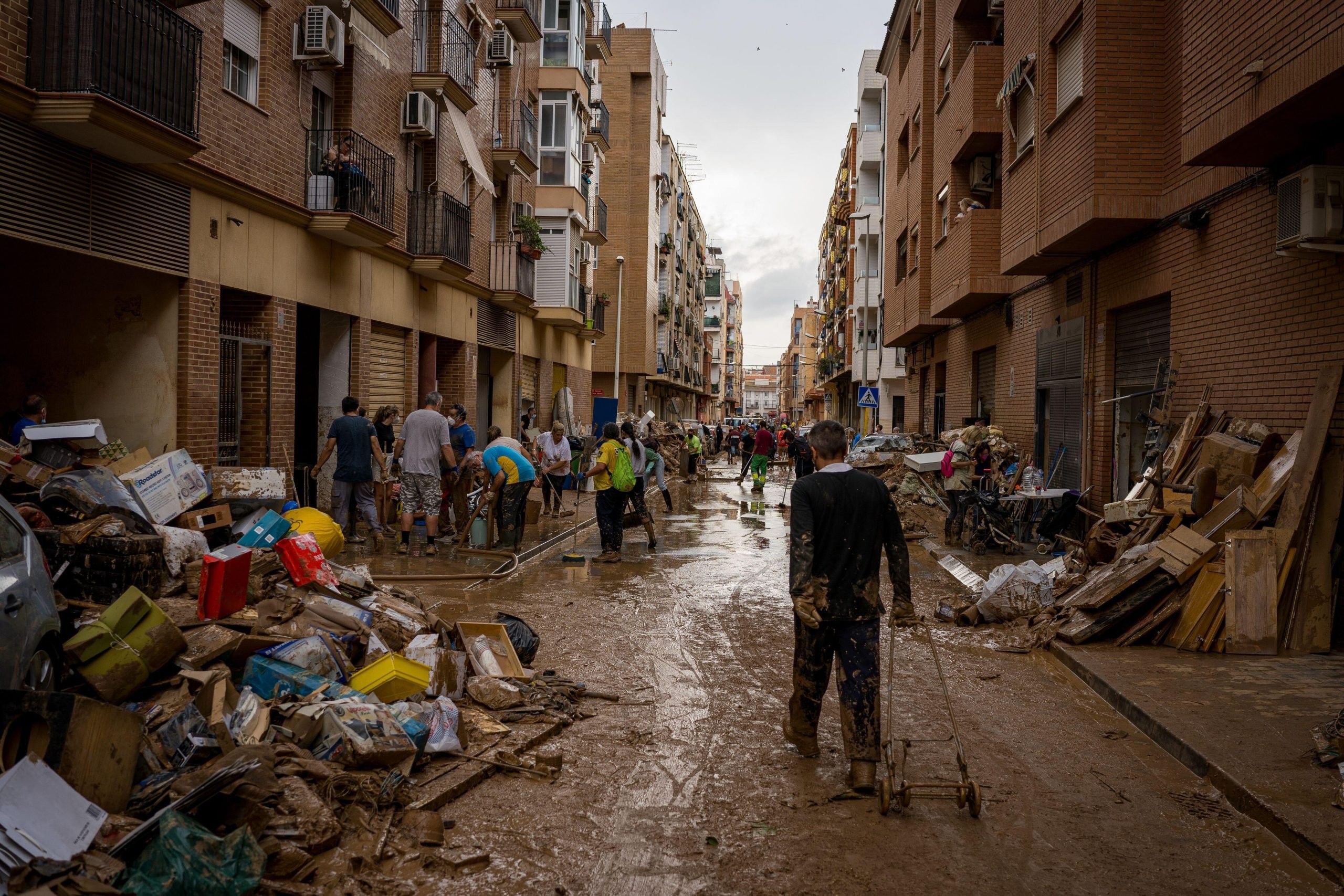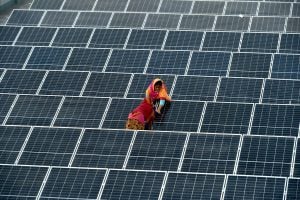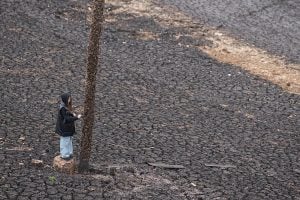The notion that climate disasters only affect poor countries is now outdated. This month’s historic flooding in Spain, soon after the havoc of hurricanes Helene and Milton in Florida, demonstrate that climate-related loss and damage does not discriminate between rich and poor. These events reinforce the urgent need for global climate action.
Climate finance is expected to dominate discussions at COP29, which began this week in Baku. There is some hope that bolder action will be agreed, although Donald Trump’s election win has created huge uncertainty.
During Trump’s first term, the US became the first nation in the world to announce its withdrawal from the Paris Agreement (a decision reversed by Joe Biden in 2021). Trump’s second victory is very likely to increase fossil fuel production, and he has also pledged to “rescind all unspent funds under the Inflation Reduction Act’’. The act aims to create green jobs, reduce fossil fuel consumption and switch to clean energy.
As UN Secretary-General António Guterres emphasised in his closing remarks at COP28 in 2023: “The world cannot afford delays, indecision, or half-measures.”
A potential new path forward
The past two decades have seen some progress in the realm of climate finance, but not enough. The Copenhagen Accord of 2009 marked a pivotal moment, when industrialised countries pledged to increase overall climate change financing for poorer countries to USD 100 billion a year by 2020.
The question of how this pledge would be fulfilled was left unanswered. As a result, the methodology by which these industrialised countries have claimed to mobilise funds has drawn fierce criticism. The target was officially met in 2022 after a two-year delay. This was called into question, however, after a Reuters report revealed suspicious allocations of the cash. Large sums had been invested in coal plants, hotels, chocolate shops, a film and an airport expansion. This comes as little surprise, due to the lack of official guidelines in place.
What’s more, according to OECD reports, USD 21.9 billion of the USD 115.9 billion in climate finance provided in 2022 was private sector cash. This makes it appear like a short-term fix, driven by profit and growth-oriented outcomes, rather than a human rights-based approach.
Under the Paris Agreement, nations agreed to set a new climate finance target by 2025 – a New Collective Quantified Goal (NCQG). This will be a decisive issue at COP29.
The NCQG is designed to respond to the inevitable harm that climate change inflicts on LDCs (Least Developed Countries) and SIDS (Small Island Developing States). The Solomon Islands, for example, is ravaged by cyclones every year and threatened by rising sea levels, which could erase its identity, history and culture.
Negotiations over the NCQG have been taking place for months. The key pillars include:
- The mobilisation of climate finance for both mitigation and adaptation.
- Addressing the financial needs of developing nations.
- Ensuring that “new and additional” climate finance does not detract from existing development aid.
- Aligning financial resources with the Paris Agreement’s goals, focusing on low greenhouse gas emissions and climate resilience.
- Promoting inclusivity, equity, transparency and accountability.
Despite the importance of these measures, the failure of the symbolic USD 100 billion goal has fostered political distrust between nations at recent UN climate talks. Disagreements are rife and progress is slow.
The debt burden and crumbling public support
The delay in meeting the agreed climate funding target has worsened the situation for nations most vulnerable to climate change impacts. This ties into broader debates on global priorities, as fossil fuel investments continue alongside growing clean energy investments.
According to the UN’s “Trade and Development Report 2023”, 61% of fossil fuel companies’ credit comes from banks in developed countries. The report says most of this supports export-oriented projects, for global minority consumption. For example, Africa’s oil and gas is largely consumed by the EU and the profits flow to transnational companies.
Multilateral organisations like the International Monetary Fund and the World Bank are still pushing measures that charge the public for emissions reductions. This threatens to undermine public support for climate action.
Additionally, in 2022, 69% of the USD 91 billion in public climate finance was loaned, at market-based interest rates. According to new analysis by the International Institute for Environment and Development, 58 developing countries and SIDS spent half the climate finance they received during 2022 on debt repayment. Indebtedness can lead nations to cut public services, and every dollar spent on loan repayments is one dollar less for climate-resilient infrastructure to address loss and damage.
The wrong priorities
COP29 has been referred to as the “COP of peace” by host nation Azerbaijan. But one of the most pressing-yet-overlooked issues of loss and damage discourse remains militarism.
Military spending has surged as climate financing has lagged. As the economist Mariana Mazzucato puts it: “The urgency to win is why money is always available for wartime missions – whether in the world wars, Vietnam, or Iraq. Money seems to be created for this purpose. There is no reason why a ‘whatever it takes’ mentality cannot be used for social problems.”
By 2023, annual global military expenditure had reached a record high of USD 2.24 trillion. This dwarfed the USD 100 billion climate financing pledge. The US spent approximately USD 916 billion on its military last year, five times more than it allocated for its climate finance pledge. It is the largest military spender and historically the largest emitter of greenhouse gases. Of the US government’s greenhouse gas emissions, 70% arise from its military operations. In 2021, they generated an estimated 100 million metric tonnes of emissions at least – more than, for example, Chile’s entire emissions that year.
And yet, military emissions were exempt from the international reporting requirements of the Kyoto Protocol. Reporting them under the Paris Agreement is voluntary.
A recent report outlining how rich countries could raise USD 5 trillion a year for the NCQG suggested redistributing 20% of public military spending and taxing arms sales.
The arms race is not only fuelling the stock prices of defence contractors and asset managers, but exacerbating the repression of climate-vulnerable countries, both socially and economically.
What can we dare to change?
Following the NCQG discussions in Baku, public hearings for an historic climate justice case take place at the International Court of Justice next month. It is essential that both adopt a rights-based approach to addressing loss and damage, which necessitates prioritising the quality and transparency of financing reforms.
Crucially, any loans categorised as “climate finance” must be spent on green projects, not fossil fuels. The disagreements over funding commitments and the growing finance gap must be resolved. Who will pay and who should be prioritised for support must be clarified, especially given the voluntary nature of these contributions.
These financial commitments should not be distanced from the responsibilities outlined in the UN Framework Convention on Climate Change and the Paris Agreement. Both vehemently consider loss and damage support from developed nations to be a critical priority.
Finally, the decarbonisation of key industries, including the military and arms sectors, must be placed firmly on the agenda, especially when considering how financial resources should be diverted and prioritised to support the loss and damage fund.
Only through such decisive actions can we hope to adequately address the urgent and growing challenges of climate-related loss and damage.









